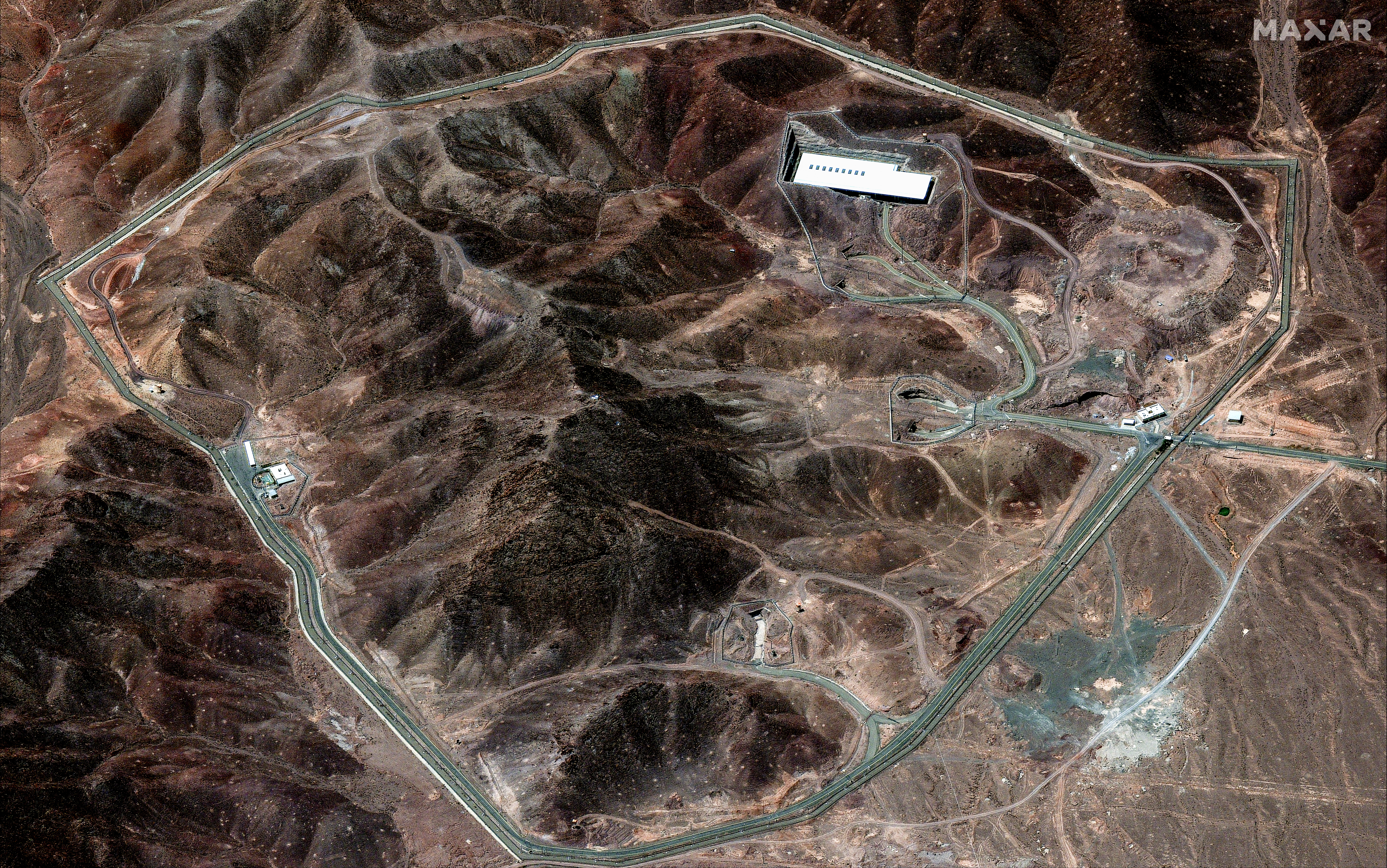If a U.S. ‘bunker buster’ hits a nuclear site, what might get released into the air?
If the U.S. does drop a powerful “bunker buster” bomb on a suspected underground nuclear weapons site in Iran, experts in radiation hazards see little risk of widespread contamination.
The site in question, Iran’s mysterious Fordow Fuel Enrichment Plant, is built into a mountainside and seems to be in the business of processing uranium isotopes. That means it would mostly be working with uranium in the form of a gas called uranium hexafluoride.
“It’s a big, heavy gas molecule,” says Emily Caffrey, a health physics expert at the University of Alabama at Birmingham, who explains that because this gas molecule is so heavy, “it’s likely not going to travel super-far.”
Any contamination from an attack would remain fairly localized to the site, she says.
While it’s hard to estimate the risks given that the exact type and quantity of the material at the site aren’t publicly known, she says, an environmental release likely wouldn’t present a problem “for anybody that’s not in the immediate area.”
Edwin Lyman, director of nuclear power safety at the Union of Concerned Scientists in Washington, D.C., adds that the two major kinds of uranium isotopes found at this type of facility “are at the low end of hazard with regard to radioactive materials.”
“So there’s not a significant, dire health threat if those materials got released to the environment,” he says. “It would probably lead, at most, to a relatively low level of contamination — not zero — but probably fairly close to the site.”
One concern is that uranium hexafluoride gas can react with water in the air to form hydrofluoric acid. “That is an acutely hazardous material that can harm or kill people,” says Lyman.
But in this case, given that the site is in underground caverns “and the bunker busters are designed to collapse the mountain above it,” he says, “any kind of environmental release would be relatively low since it would be essentially inhibited by this mass of rock that’s rained down on it.”
Rafael Mariano Grossi, the director-general of the International Atomic Energy Agency, has said that the agency has been monitoring the effects of strikes on Iran’s facilities.
One attack damaged the aboveground portion of the Natanz Fuel Enrichment Plant, he recently reported, but the “level of radioactivity outside the Natanz site has remained unchanged and at normal levels, indicating no external radiological impact to the population or the environment from this event.”
Inside the site, however, he said there was “both radiological and chemical contamination,” with the main concern being the chemical toxicity of uranium hexafluoride and the compounds generated when it made contact with water.
The main radiation danger there would come from inhaling or ingesting uranium, he said, but “this risk can be effectively managed with appropriate protective measures, such as using respiratory protection devices while inside the affected facilities.”
1 student dead, 1 critically injured in shooting at Kentucky State University
Classes and campus activities were canceled for the rest of the week after a shooting that police said left one student dead and another in critical condition. Police said a suspect who is not a KSU student was in custody.
Millions of borrowers in Biden’s SAVE plan would start paying under new settlement
Legal challenges put SAVE borrowers in limbo for months, a time during which they were not required to make payments on their loans. That would change if the proposed settlement is approved.
Rising temperatures could have a chilling impact on young children
A study points to a new concern about the effect that heat can have on young children.
‘Pluribus’ star Rhea Seehorn says no thanks to a world dictated by group think
In the Apple TV series, Seehorn stars as a woman named Carol who suddenly finds herself surrounded by people who are inexplicably happy. The only problem: Carol's not interested in joining them.
Who is Danny Ocean, the pop star playing at the Nobel Peace Prize ceremony?
The 33-year-old singer collaborated with Nobel Prize winner María Corina Machado during last year's highly-contested elections in Venezuela.
Believe it or not, this book makes taxes fascinating
The Price of Democracy tells the history of taxation from colonization to the present day. It's essential reading for anyone who cares about preserving democracy.







